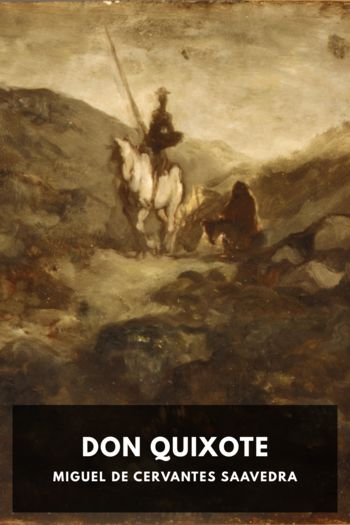First Lensman, E. E. Smith [top 100 novels of all time .txt] 📗

- Author: E. E. Smith
Book online «First Lensman, E. E. Smith [top 100 novels of all time .txt] 📗». Author E. E. Smith
Why axes? Why not Lewistons, or rifles, or pistols? Because the space armor of that day could withstand almost indefinitely the output of two or three handheld projectors; because the resistance of its defensive fields varied directly as the cube of the velocity of any material projectile encountering them. Thus, and strangely enough, the advance of science had forced the re-adoption of that long-extinct weapon.
Most of the pirates had died, of course, during the dismemberment of their ship. Many more had been picked off by the needle-beam gunners. In the control room, however, there was a platoon of elite guards, clustered so closely about the commander and his officers that needles could not be used; a group that would have to be wiped out by hand.
If the attack had come by way of the only doorway, so that the pirates could have concentrated their weapons upon one or two Patrolmen, the commander might have had time enough to do what he was under compulsion to do. But while the Patrolmen were still in space a plane of force sheared off the entire side of the room, a tractor beam jerked the detached wall away, and the attackers floated in en masse.
Weightless combat is not at all like any form of gymnastics known to us ground-grippers. It is much more difficult to master, and in times of stress the muscles revert involuntarily and embarrassingly to their wonted gravity-field techniques. Thus the endeavors of most of the battlers upon both sides, while earnest enough and deadly enough of intent, were almost comically unproductive of result. In a matter of seconds frantically-struggling figures were floating from wall to ceiling to wall to floor; striking wildly, darting backward from the violence of their own fierce swings.
The Tellurian Lensmen, however, had had more practice and remembered their lessons better. Jack Kinnison, soaring into the room, grabbed the first solid thing he could reach; a post. Pulling himself down to the floor, he braced both feet, sighted past the nearest foeman, swung his axe, and gave a tremendous shove. Such was his timing that in the instant of maximum effort the beak of his atrociously effective weapon encountered the pirate’s helmet—and that was that. He wrenched his axe free and shoved the corpse away in such a direction that the reaction would send him against a wall at the floor line, in position to repeat the maneuver.
Since Mason Northrop was heavier and stronger than his friend, his technique was markedly different. He dove for the chart-table, which of course was welded to the floor. He hooked one steel-shod foot around one of the table’s legs and braced the other against its top. Weightless but inert, it made no difference whether his position was vertical or horizontal or anywhere between; from this point of vantage, with his length of body and arm and axe, he could cover a lot of room. He reached out, hooked bill of axe into belt or line-snap or angle of armor, and pulled; and as the helplessly raging pirate floated past him, he swung and struck. And that, too, was that.
Dronvire of Rigel Four did not rush to the attack. He had never been and was not now either excited or angry. Indeed, it was only empirically that he knew what anger and excitement were. He had never been in any kind of a fight. Therefore he paused for a couple of seconds to analyze the situation and to determine his own most efficient method of operation. He would not have to be in physical contact with the pirate captain to go to work on his mind, but he would have to be closer than this and he would have to be free from physical attack while he concentrated. He perceived what Kinnison and Costigan and Northrop were doing, and knew why each was working in a different fashion. He applied that knowledge to his own mass, to his own musculature, to the length and strength of his arms—each one of which was twice as long and ten times as strong as the trunk of an elephant. He computed forces and leverages, actions and reactions, points of application, stresses and strains.
He threw away two of his axes. The two empty arms reached out, each curling around the neck of a pirate. Two axes flashed, grazing each pinioning arm so nearly that it seemed incredible that the sharp edges did not shear away the Rigellian’s own armor. Two heads floated away from two bodies and Dronvire reached for two more. And two—and two—and two. Calm and dispassionate, but not wasting a motion or a millisecond, Dronvire accomplished more, in less time, than all the Tellurians in the room.
“Costigan, Northrop, Kinnison—attend!” he launched a thought. “I have no time to kill more of them. The commander is dying of a self-inflicted wound and I have important work to do. See to it, please, that these remaining creatures do not attack me while I am doing it.”
Dronvire tuned his mind to that of the pirate and probed. Although dying, the pirate captain offered fierce resistance, but the Rigellian was not alone. Attuned to his mind, working smoothly with it, giving it strengths and qualities which no Rigellian ever had had or ever would have, were the two strongest minds of Earth: that of Rod the Rock Kinnison, with the driving force, the indomitable will, the transcendent urge of all human





Comments (0)